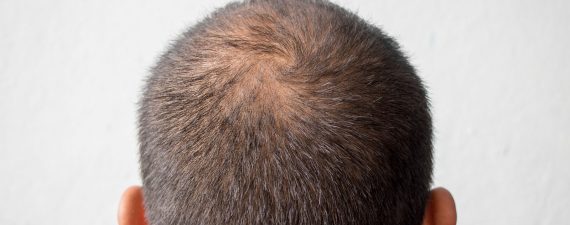A Guide to Alopecia

Hair loss affects millions of people around the world. But did you know that there are different types of hair loss? Alopecia is a common cause of several types of hair loss. This guide will help you learn more about alopecia, who it affects, and what treatment options are available.
What Is Alopecia?
Alopecia is a hair loss disease that can occur suddenly or over time and affects males and females of all ages. There are three main types of the disease. People who are diagnosed with alopecia areata have partial hair loss on the head that typically looks patchy rather than a general thinning. Some suffer from alopecia totalis, which causes the patient to lose all the hair on his or her head. Finally, there are rare cases of alopecia universalis. As the term "universal" implies, this means the loss of all hair on the head and body including eyebrows, leg hair, and so on.
The Reaches of Alopecia
Alopecia affects both men and women of all ethnicities. Unfortunately, doctors do not fully understand how or why people develop alopecia; however, they do know it is an autoimmune disorder stemming from a combination of the patient's environmental influences and his or her genetic makeup. The disease begins when immune cells target hair follicles in their growth phase. This attack keeps the hair from growing.
How Many People Have Alopecia?
According to the American Association of Dermatology, roughly 80 million people in the United States deal with some form of hair loss or hair thinning.
Luckily, alopecia is not life-threatening, nor is it physically painful. The loss of hair, however, can make people self-conscious about their appearance and has been linked to anxiety, depression, and other mental health problems.
Treatment for Alopecia
Treatment for alopecia depends on the type of hair loss. For example, rare, serious types of alopecia may not respond to certain treatments whereas mild cases of the disease may resolve themselves, and some people find relief within a few months. To know what kind of hair loss you may have, you should visit a hair doctor (usually an experienced dermatologist).
If you suffer from chronic hair loss, you thankfully have plenty of options for hair restoration. Options include safe, effective, non-invasive hair transplants like the NeoGraft FUE transplant. You may also benefit from platelet-rich plasma treatments or NeoLTS light therapy to stimulate hair growth in damaged follicles.
Alopecia is a serious condition, but it does not need to take a toll on your life. If you suspect you may be suffering from the disease, visit a specialist like Dr. Arthur at the Hair Center at Helendale.
The Hair Center at Helendale is located at 500 Helendale Rd in Rochester, NY and can be reached by phone at 585-266-5420 anytime during regular hours.
